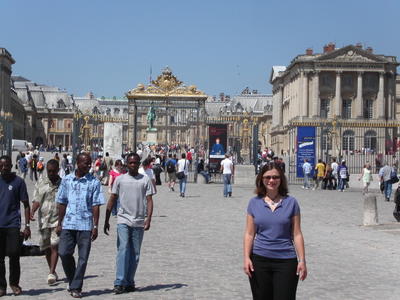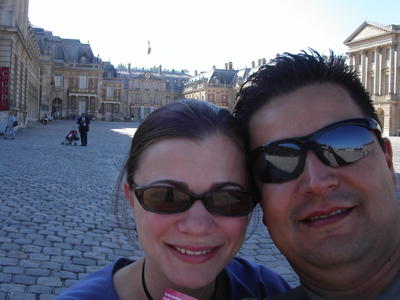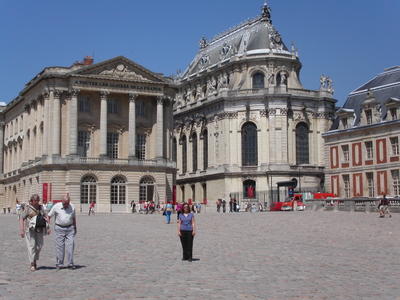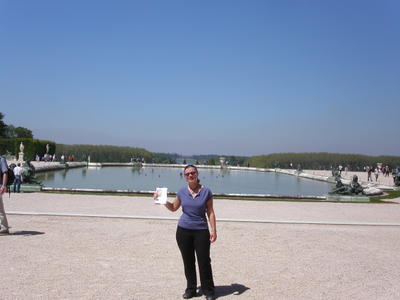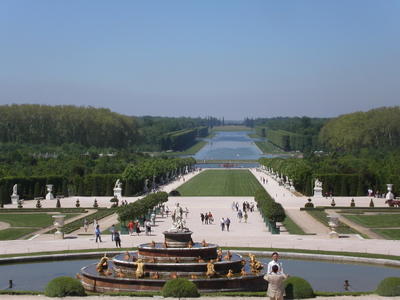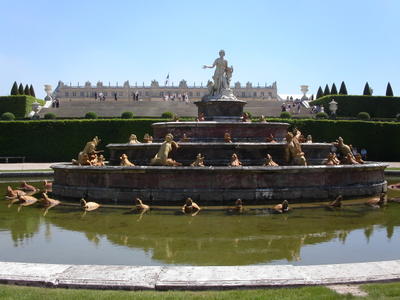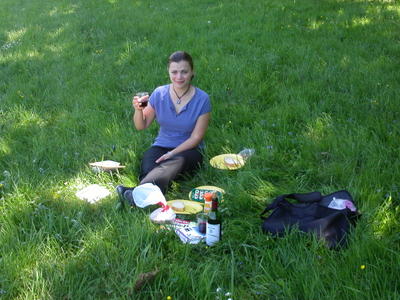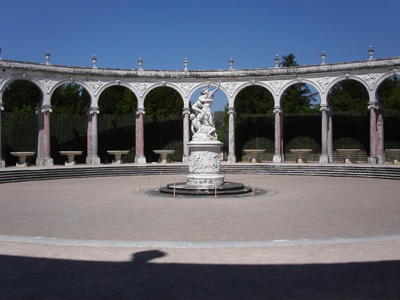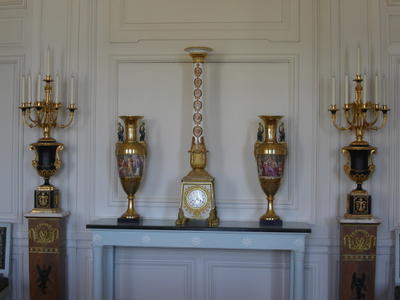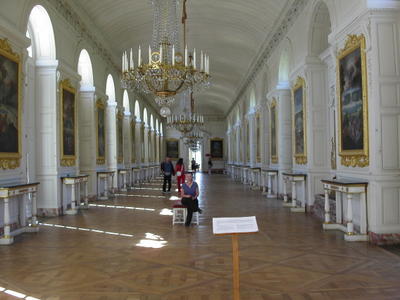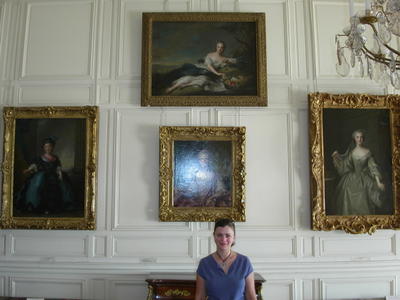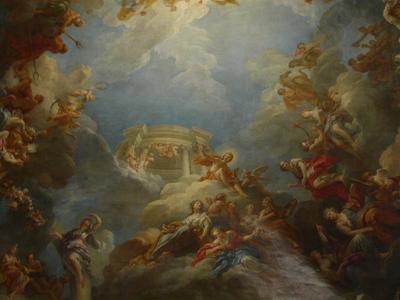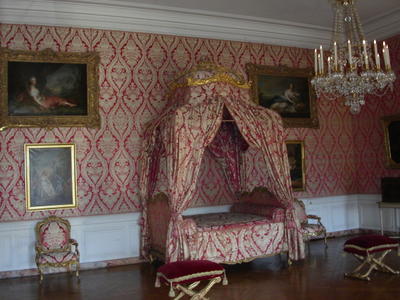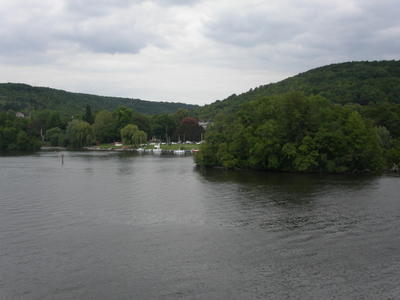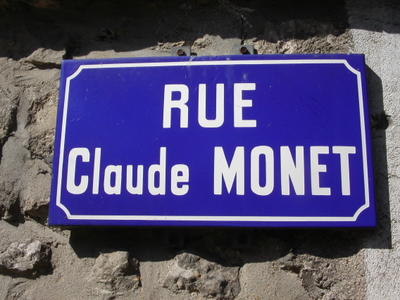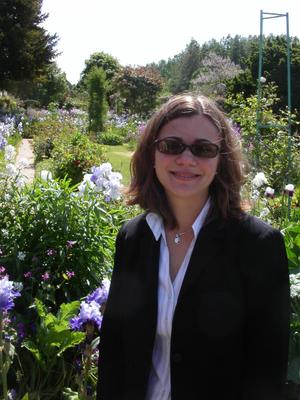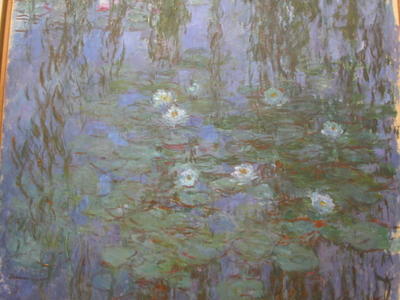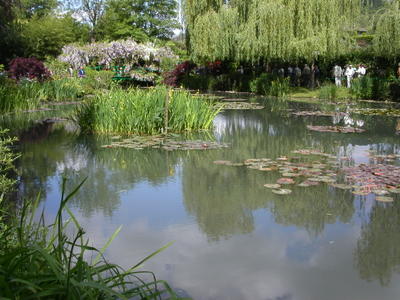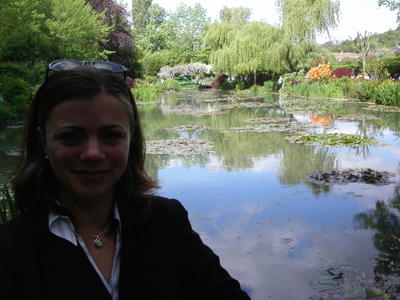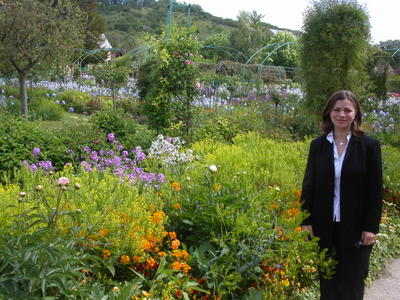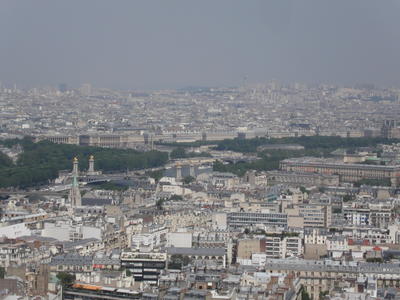 Paris: Ernest Hemingway called the many splendors of Paris a "moveable feast" and wrote, "There is never any ending to Paris, and the memory of each person who has lived in it differs from that of any other." France has been called le deuxième pays de tout le monde (everybody's second country).
Paris: Ernest Hemingway called the many splendors of Paris a "moveable feast" and wrote, "There is never any ending to Paris, and the memory of each person who has lived in it differs from that of any other." France has been called le deuxième pays de tout le monde (everybody's second country). A warm welcome at the Hotel Lotti. The Jolly Hotel Lotti is centrally located on a prestigious Right Bank shopping street between the Place Vendôme and Tuileries Gardens; the Louvre is a 15-minute walk away.
A warm welcome at the Hotel Lotti. The Jolly Hotel Lotti is centrally located on a prestigious Right Bank shopping street between the Place Vendôme and Tuileries Gardens; the Louvre is a 15-minute walk away.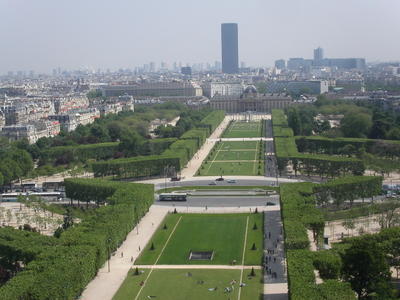 Parc du Champs-de-Mars: The vast green esplanade beneath the Eiffel Tower is the Parc du Champs-de-Mars, extending all the way to the 18th-century Ecole Militaire (Military Academy), at its southeast end. This formal lawn was once a parade ground for French troops.
Parc du Champs-de-Mars: The vast green esplanade beneath the Eiffel Tower is the Parc du Champs-de-Mars, extending all the way to the 18th-century Ecole Militaire (Military Academy), at its southeast end. This formal lawn was once a parade ground for French troops.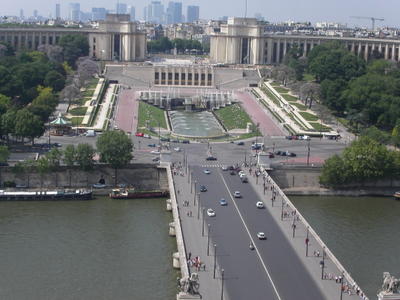 The Palais de Chaillot was built in 1937 by architects Carlu, Boileau and Azema as one of the highlights of the 1937 French last colonial exhibition. It houses the Navy museum, the Mankind museum and the 1200 seats TNP theater.
The Palais de Chaillot was built in 1937 by architects Carlu, Boileau and Azema as one of the highlights of the 1937 French last colonial exhibition. It houses the Navy museum, the Mankind museum and the 1200 seats TNP theater.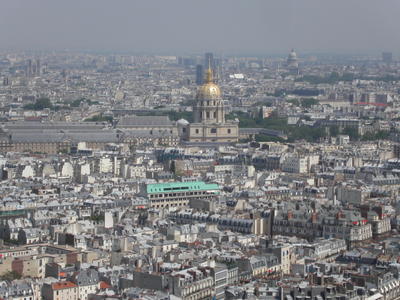 View of Paris from the Eiffel Tower.
View of Paris from the Eiffel Tower.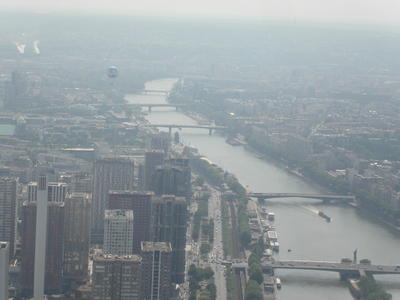 The Seine River not only divides Paris into the Right Bank and the Left Bank but seems to split the city into two vastly different sections and ways of life.
The Seine River not only divides Paris into the Right Bank and the Left Bank but seems to split the city into two vastly different sections and ways of life. Third level at the Eiffel Tower: 276.13 meters (905 feet, 11 inches). Exceptional panoramic views, day or night, of Paris and its surroundings.
Third level at the Eiffel Tower: 276.13 meters (905 feet, 11 inches). Exceptional panoramic views, day or night, of Paris and its surroundings. View of the Arc de Triomphe from the third level of theEiffel Tower.
View of the Arc de Triomphe from the third level of theEiffel Tower.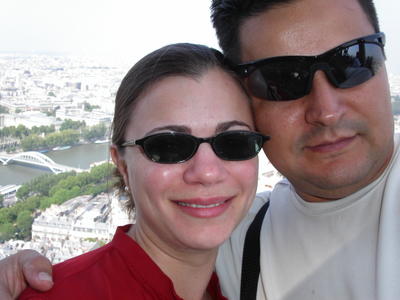 From its platforms - especially the topmost - the view upon Paris is superb. It is generally agreed that one hour before sunset, the panorama is at its best.
From its platforms - especially the topmost - the view upon Paris is superb. It is generally agreed that one hour before sunset, the panorama is at its best.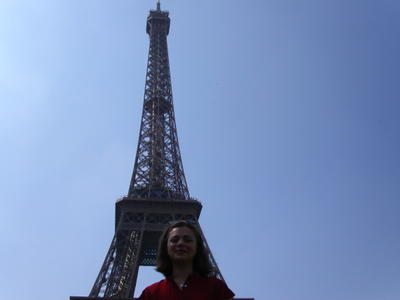 The Eiffel Tower as erected for the Paris Exposition of 1889. The controversial tower elicited some strong reactions, and it was almost torn down in 1909 at the expiration of its 20-year lease, but was saved because of its antenna — used for telegraphy at that time.
The Eiffel Tower as erected for the Paris Exposition of 1889. The controversial tower elicited some strong reactions, and it was almost torn down in 1909 at the expiration of its 20-year lease, but was saved because of its antenna — used for telegraphy at that time.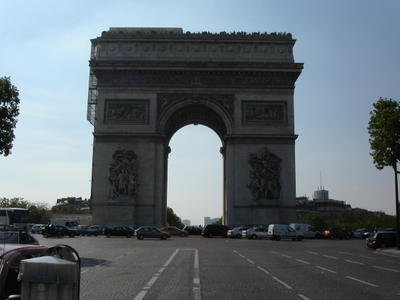 Arc de Triomphe: In 1806, Napoleon decided to build a very big arch of triumph which stands at the top of the Champs Elysées. His victorious troops would march on through the arch cheered by the population of Paris. This never happened thanks to General Wellington who defeated Napoléon at Waterloo in 1815. The design of the arch by Jean Chalgrin is based on the Arch of Titus in Rome.
Arc de Triomphe: In 1806, Napoleon decided to build a very big arch of triumph which stands at the top of the Champs Elysées. His victorious troops would march on through the arch cheered by the population of Paris. This never happened thanks to General Wellington who defeated Napoléon at Waterloo in 1815. The design of the arch by Jean Chalgrin is based on the Arch of Titus in Rome. Winding stairs that take you to the top of the Arc de Triomphe(46m/160ft).
Winding stairs that take you to the top of the Arc de Triomphe(46m/160ft). The Champs-Elysées, also named "La plus belle avenue du monde" (the most beautiful avenue in the world), stretch from the Concorde square to the Arc de Triomphe.
The Champs-Elysées, also named "La plus belle avenue du monde" (the most beautiful avenue in the world), stretch from the Concorde square to the Arc de Triomphe. Shakespeare and Company: Set in the heart of Paris on the Left Bank opposite Notre-Dame, Shakespeare and Company has grown from a bookstore into an institution. It is situated in the Latin Quarter. Shakespeare and Company first opened its doors in 1951.
Shakespeare and Company: Set in the heart of Paris on the Left Bank opposite Notre-Dame, Shakespeare and Company has grown from a bookstore into an institution. It is situated in the Latin Quarter. Shakespeare and Company first opened its doors in 1951.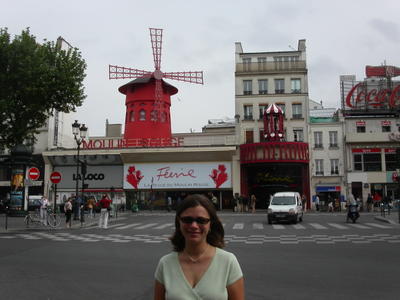 Moulin Rouge: Immortalized by French artist, Toulouse-Lautrec, and the birthplace of the dance, the cancan, the Moulin Rouge (The Red Windmill) took its name from one of the windmills of Montmartre. On October 5, 1889, the Moulin Rouge opened as the "rendez-vous du high life" at the foot of Montmartre.
Moulin Rouge: Immortalized by French artist, Toulouse-Lautrec, and the birthplace of the dance, the cancan, the Moulin Rouge (The Red Windmill) took its name from one of the windmills of Montmartre. On October 5, 1889, the Moulin Rouge opened as the "rendez-vous du high life" at the foot of Montmartre. Pont Alex III: Most people consider the Pont Alexandre III the most beautiful bridge in Paris. It is lavishly decorated with lampposts and sculptures
Pont Alex III: Most people consider the Pont Alexandre III the most beautiful bridge in Paris. It is lavishly decorated with lampposts and sculptures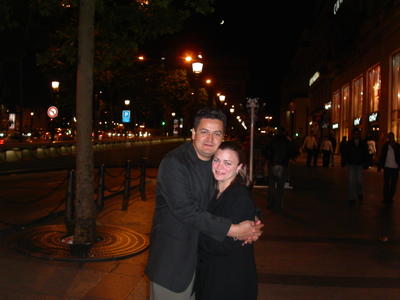 Taking a stroll down the Champs-Elysees the night before our return to the USA.
Taking a stroll down the Champs-Elysees the night before our return to the USA.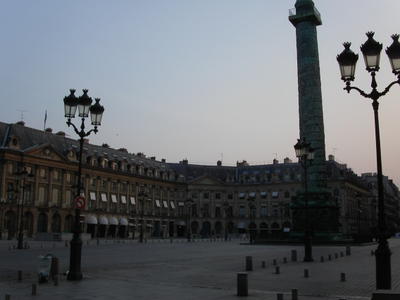 Place Vendôme: In 1685, this architectural jewel was commissioned by King Louis XIV and designed by Jules-Hardouin Mansart. The Column - 44 m/145ft high- is comprised of a stone core, encased in the bronze of 1250 cannons captured by Napoleon at the Battle of Austerliz.
Place Vendôme: In 1685, this architectural jewel was commissioned by King Louis XIV and designed by Jules-Hardouin Mansart. The Column - 44 m/145ft high- is comprised of a stone core, encased in the bronze of 1250 cannons captured by Napoleon at the Battle of Austerliz.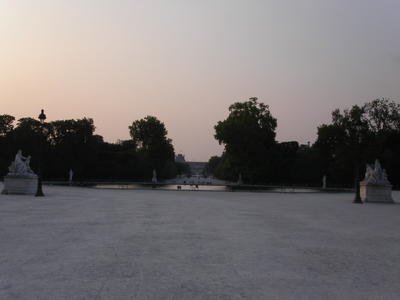 Jardin des Tuileries: The Tuileries is a most splendid, formal expanse of greenery just adjacent to the magnificent Louvre. the Tuileries is a "people’s" meeting place amidst all the pomp and glory of France’s monarchical and imperial past.
Jardin des Tuileries: The Tuileries is a most splendid, formal expanse of greenery just adjacent to the magnificent Louvre. the Tuileries is a "people’s" meeting place amidst all the pomp and glory of France’s monarchical and imperial past.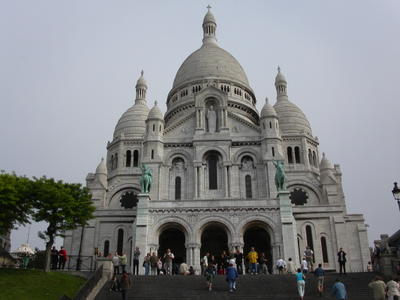 Basilique du Sacré-Coeur: A Romano-Byzantine church completed in 1914. At the outbreak of the Franco-Prussian War in 1870, two Catholic businessmen, Alexandre Legentil and Rohault de Fleury, made a private religious vow-that should France be spared the Prussian onslaught, they’d build a church and dedicate it to the Sacred Heart of Christ.
Basilique du Sacré-Coeur: A Romano-Byzantine church completed in 1914. At the outbreak of the Franco-Prussian War in 1870, two Catholic businessmen, Alexandre Legentil and Rohault de Fleury, made a private religious vow-that should France be spared the Prussian onslaught, they’d build a church and dedicate it to the Sacred Heart of Christ.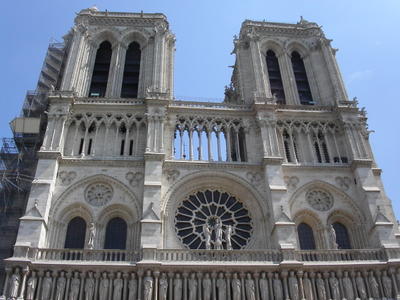 Notre-Dame: The Gothic loftiness of Notre-Dame dominates the Seine and the Ile-de-la-Cité as well as the history of Paris. On the spot where this majestic cathedral now stands, the Romans had built a temple to Jupiter, which was followed by a Christian basilica and then a Romanesque church (the Cathedral of St. Etienne, founded by Childebert in 528).
Notre-Dame: The Gothic loftiness of Notre-Dame dominates the Seine and the Ile-de-la-Cité as well as the history of Paris. On the spot where this majestic cathedral now stands, the Romans had built a temple to Jupiter, which was followed by a Christian basilica and then a Romanesque church (the Cathedral of St. Etienne, founded by Childebert in 528).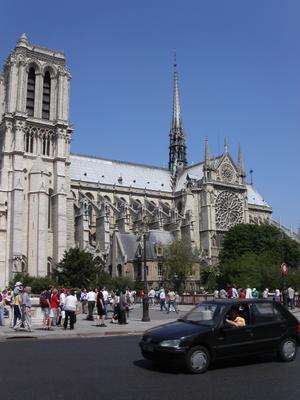 The Notre-Dame Cathedral has been around since 1163 and its construction took over 200 years to complete.
The Notre-Dame Cathedral has been around since 1163 and its construction took over 200 years to complete.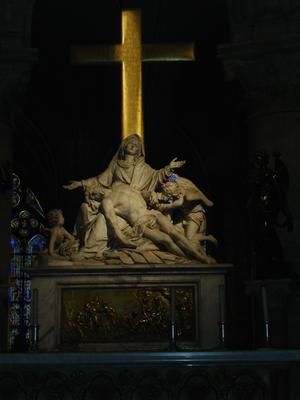 Monument inside Notre-Dame.
Monument inside Notre-Dame.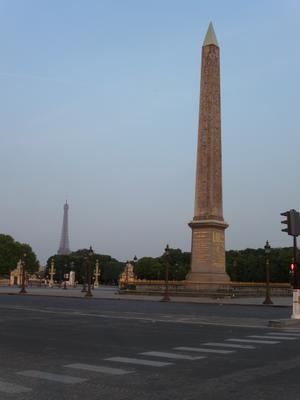 Place de la Concorde is the largest square in Europe. Centre stage is the pink granite Luxor obelisk, 3,300 years old and brought from Egypt as a gift in 1831.
Place de la Concorde is the largest square in Europe. Centre stage is the pink granite Luxor obelisk, 3,300 years old and brought from Egypt as a gift in 1831.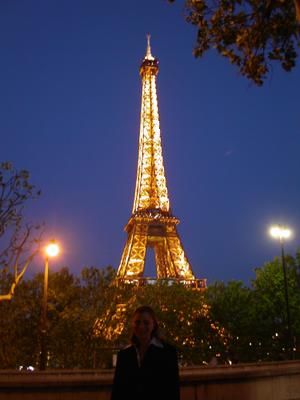 The Eiffel Tower at night is one of the great sights of Paris and shouldn't be missed. The gold lighting highlights the delicacy of the steelwork in a way that is missed in daylight.
The Eiffel Tower at night is one of the great sights of Paris and shouldn't be missed. The gold lighting highlights the delicacy of the steelwork in a way that is missed in daylight.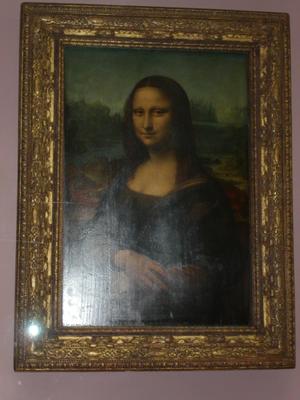 Mona Lisa: Leonardo da Vinci began the Mona Lisa in 1503 and completed it three or four years later. On August 21, 1911, one of the most famous paintings in the world, was stolen right off the wall of the Louvre. Vincenzo Peruggia, born in Italy, had worked in Paris at the Louvre in 1908. Still known by many of the guards, Peruggia had walked into the museum, noticed the Salon Carré empty, grabbed the Mona Lisa, went to the staircase, removed the painting from its frame, and walked out of the museum with the Mona Lisa under his painters smock. Peruggia was arrested after he attempted to sell the painting to an Italian antique dealer. The public went wild at the news of finding the Mona Lisa. The painting was displayed throughout Italy before it was returned to France on December 30, 1913.
Mona Lisa: Leonardo da Vinci began the Mona Lisa in 1503 and completed it three or four years later. On August 21, 1911, one of the most famous paintings in the world, was stolen right off the wall of the Louvre. Vincenzo Peruggia, born in Italy, had worked in Paris at the Louvre in 1908. Still known by many of the guards, Peruggia had walked into the museum, noticed the Salon Carré empty, grabbed the Mona Lisa, went to the staircase, removed the painting from its frame, and walked out of the museum with the Mona Lisa under his painters smock. Peruggia was arrested after he attempted to sell the painting to an Italian antique dealer. The public went wild at the news of finding the Mona Lisa. The painting was displayed throughout Italy before it was returned to France on December 30, 1913.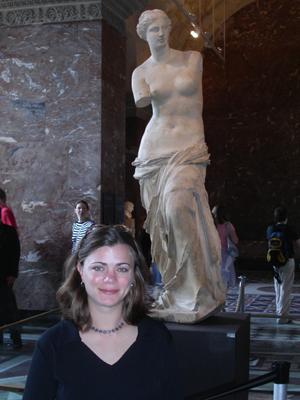 The Venus de Milo is an ancient Greek statue and one of the most famous pieces of ancient Greek sculpture. The statue dates to about 130 BC.
The Venus de Milo is an ancient Greek statue and one of the most famous pieces of ancient Greek sculpture. The statue dates to about 130 BC.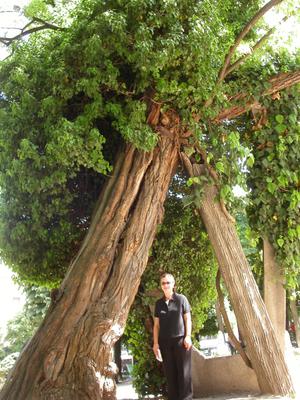
In Place René-Viviani, a rather ordinary-looking living tree has had its hollow trunk filled with concrete and its branches supported by concrete posts. The plant was brought from Virginia to Europe in 1601 and planted there by Jean Robin, herbalist to King Henri IV of France. It is the oldest tree in Paris.

